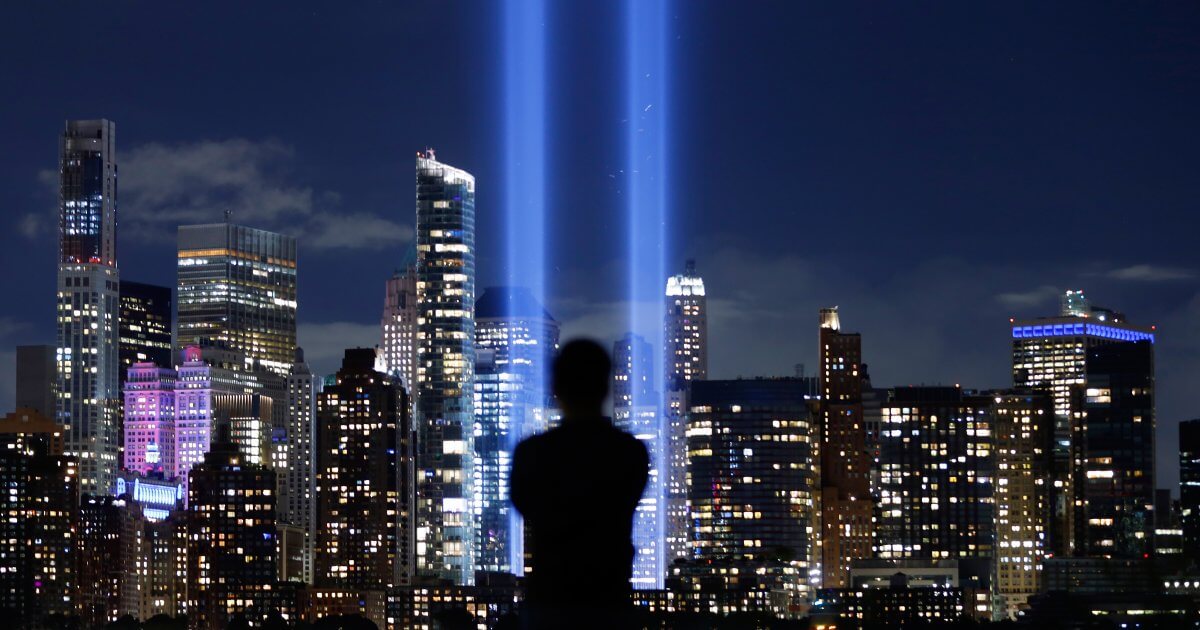9/11 Exposures Raise Cancer Risk
- People exposed to smoke, fires and dust on 9/11 and in its aftermath face higher cancer risk.
- Nearly 500,00 people could be at risk.
- Those at risk are eligible for free care and follow-up through the World Trade Center Health Program.
Rather than scramble out of lower Manhattan, covered in soot, as many of his colleagues did that day, he watched incredulously as the events unfolded on television. He had narrowly, but inadvertently, escaped the single deadliest terrorist attack in human history. But, nearly 17 years later in March 2018, a lump in his chest revealed that he had been a victim of the terror attacks after all.
Read MoreHow 9/11 Raised Cancer Risk for Nearly 500,000 People

The 9/11 attacks exposed an estimated 490,000 people to a load of cancer-causing toxins that is impossible to quantify.
"There was the explosion, the collapse, and the enormous release of material," says Crane. "Plus, you had ongoing fires for months. The dust cloud passed, but the air stayed dusty for days. No one will ever know what we inhaled."
The degree and extent of exposure was different for each person. Researchers categorize them as responders and survivors.
9/11 Responder John Feal says, “Everyone who was there, get screened.”
An estimated 90,000 people responded to the 9/11 attacks. This group includes firefighters, police officers and other rescue and emergency workers, as well as those involved in the cleanup for the next 200 days. Some were there when the towers collapsed; others arrived later. Some were on the scene only the day of the attack. Others were there every day for months.
"You had responders literally throwing themselves on piles of burning material to try to rescue people," Crane says. "Then, as time passed, you had people clambering over these ongoing fires for months, trying to fix things, trying to restore the area to some sort of use."
Another estimated 400,00 people are survivors of the attack. This group includes those who were in the area that day as well as those who returned to the area soon after to work and school while toxic debris continued to fill the air and fires continued to burn.
Related: 9/11 Cancer Survivor Beat a Recurrence at the Peak of COVID-19
"The ones who were there were literally coated in this material. As they walked out of lower Manhattan, they looked like moving ghosts who had been covered in plaster and dust," Crane says.
By the following Monday, after health and environmental officials had declared it was safe to go back to work in the area, Mormando returned to the New York Mercantile Exchange. But it didn't seem safe to him. "It was a total war zone. Fires were still burning. There was smoke everywhere," Mormando tells SurvivorNet. He continued to work in the area for several more years.
"Here we all are almost 20 years later," he says, "dealing with cancer."

While everyone's level of exposure to harmful toxins after the attack was different, one thing seems to be true for all of them: numerous studies show that their risk for cancer is higher because of it. Cancer is the fifth most common 9/11-related health condition among responders and the fourth among survivors. The most common cancers in these groups are of the skin (non-melanoma), prostate, and breast (in females), melanoma and lymphoma.
Long-Term Side Effects of One Day in History

Mormando had bouts with skin cancer in 2015 and 2016. An avid golf player, he attributed them to too much time in the sun. Then, in 2018, he felt a lump in his chest. A needle biopsy revealed he had breast cancer. He knew men could get it, but that it was rare. Mormando had no family history of the condition and, training for an Iron Man, he was in the best shape of his life. The more he researched, the more questions he had.
"So I confided to a friend of mine that worked with me down on the floor at the exchange, and he said, 'Johnny, you know there's a bunch of guys that work on the floor that have cancer,'" he says. The one thing they had in common was where they had worked in September 2001.
Related: 9/11 Cancers – New Warning Says 300,000 Not Getting Help They Need
While undergoing surgery and chemotherapy at NYU Langone's Perlmutter Cancer Center, Mormando got confirmation that his cancer was considered 9/11-related. He was eligible to enter the September 11th Victims Compensation Fund and the WTC Health Program.
Survivors and Responders Will Truly 'Never Forget'
The World Trade Center Health Program will track the health of those directly affected by the 9/11 terror attacks for a total of 75 years. It's impossible to say today just how much 9/11 exposure increases a person's lifetime risk for cancer. Only time will tell.
"The World Trade Center Health Program was built based on knowledge of other workplace exposures asbestos workers, coal miners, uranium workers. We will have to keep an eye on these people, examine them, get lab work, and collect data on them for many years," says Crane.
As for Mormando, today he is cancer-free. Once a year, he visits Bellevue Hospital for a day-long battery of tests and examinations as a part of the World Trade Center Health Program. He has regular follow-up with his cancer care team at NYU. And he takes breast cancer drug tamoxifen every day to prevent a recurrence.
"People say, 'Never forget' about 9/11. I can't forget. I think about 9/11 every day when I take that pill and know that it's because of a 9/11 cancer that I'm trying to keep from coming back. My life is forever changed because of that day."
Learn more about SurvivorNet's rigorous medical review process.


